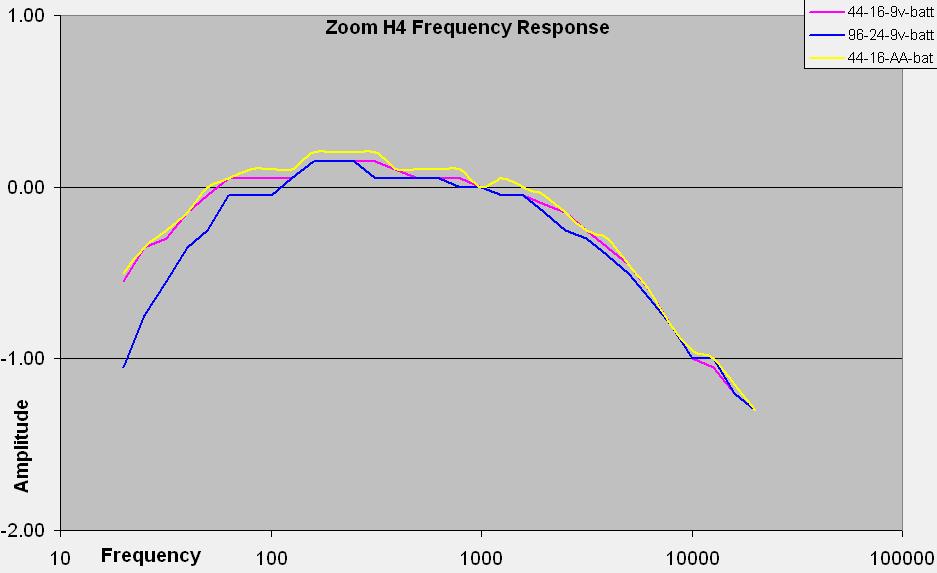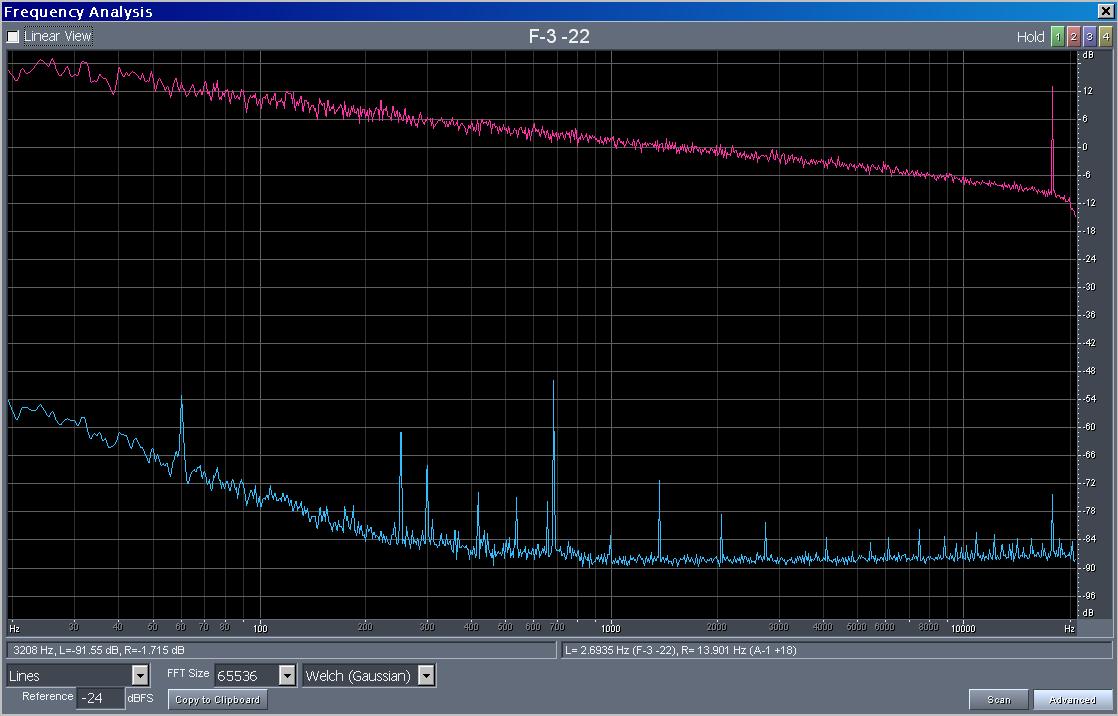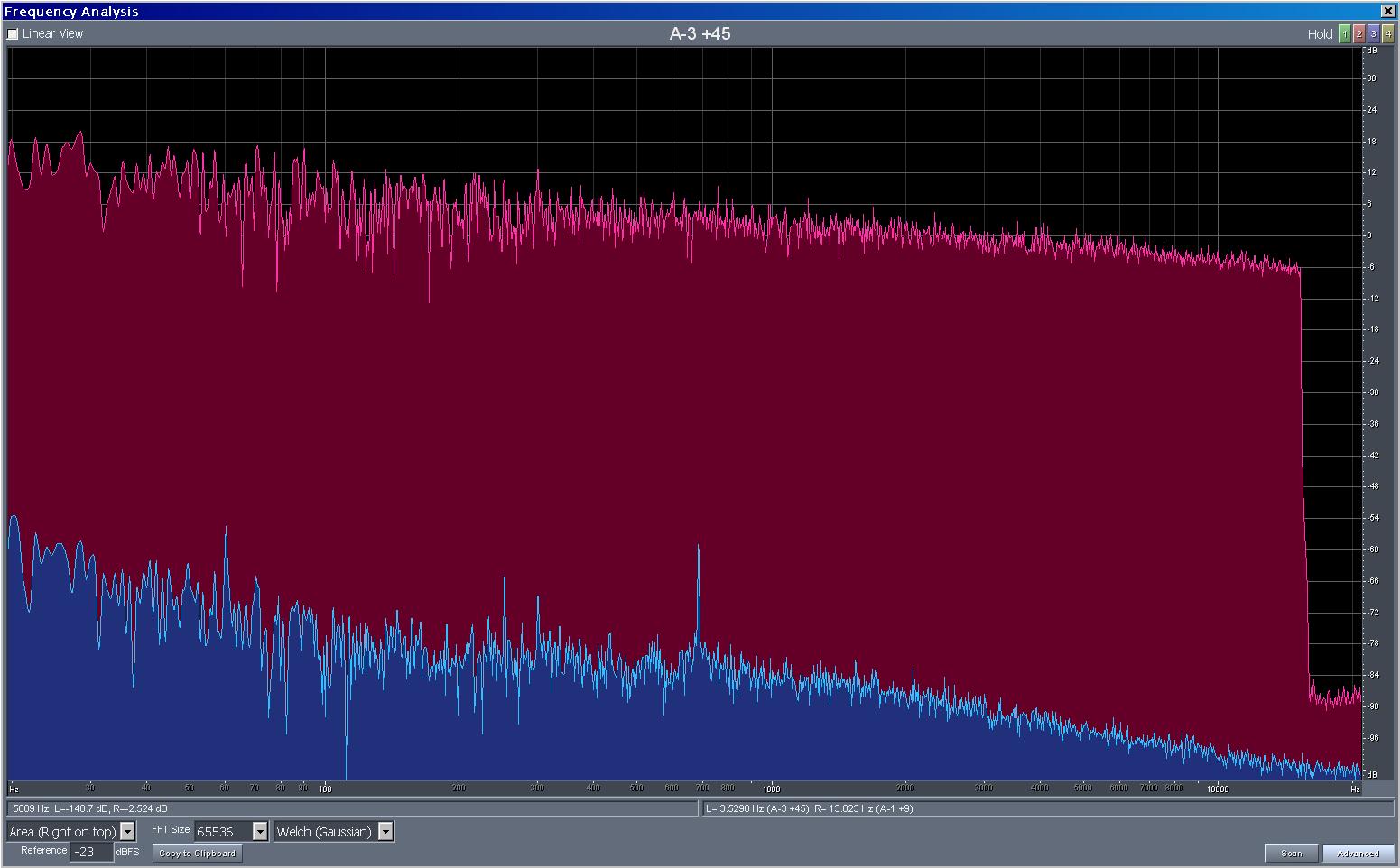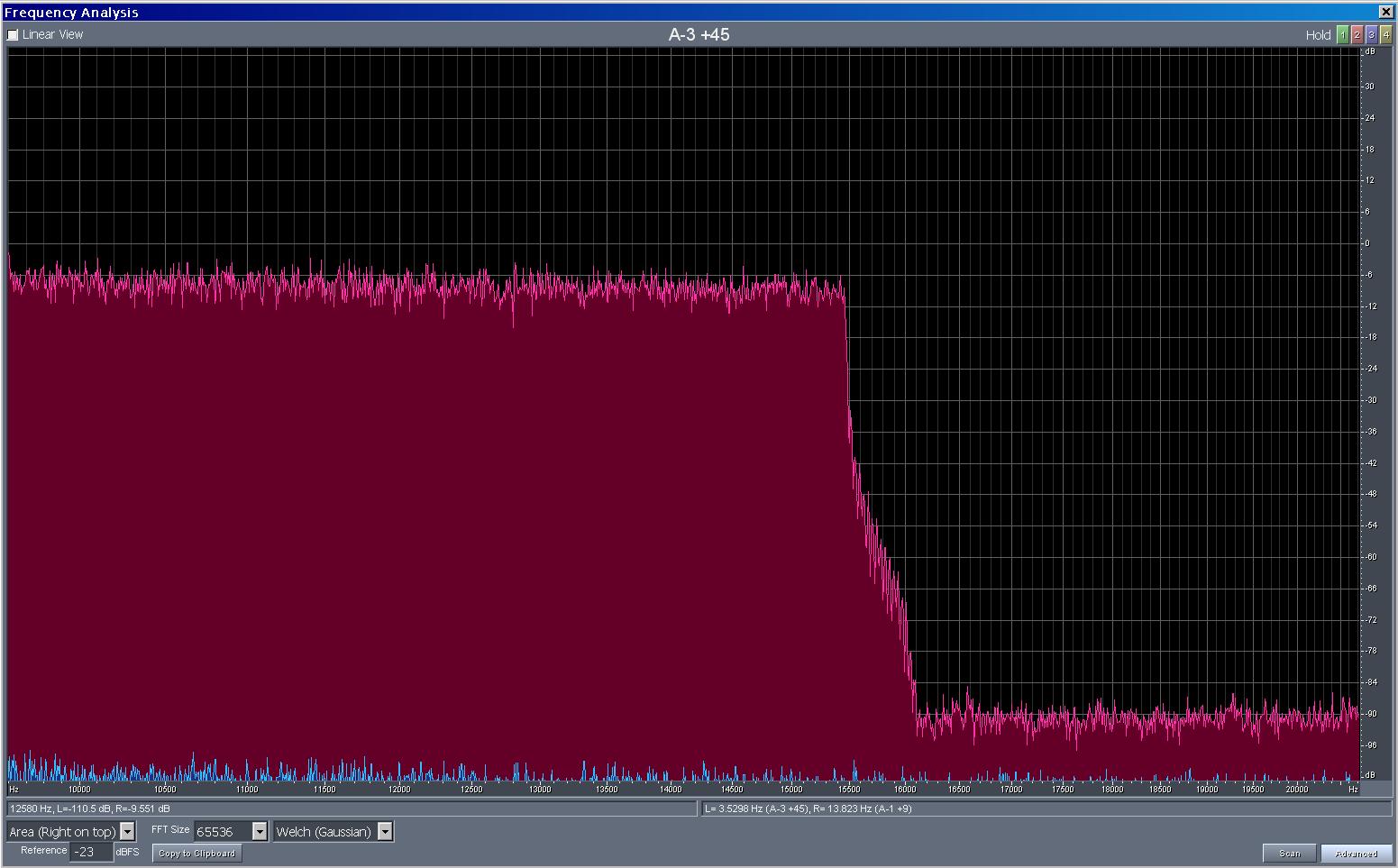I measured these specs by playing test signals from my Onkyo DX-7555 CD player.
The noise, distortion & frequency response of this player are all excellent.
I started with what is often the most easily audible and easily measurable aspect of an audio device: frequency response.
Observe the vertical scale: +1 to -2 dB.
I chose this narrow range to highlight the response curves.
The H4 has a smooth, flat response, essentially within 1dB of flat for the entire audible spectrum.
The response is essentially the same at 44.1 kHz / 16 bit and 96 kHz / 24 bit,
and on battery versus line power.
This smooth, flat response should enable it to do well as a preamp for external microphones.

I measured this using the 1/3 octave warble tones from 20 Hz to 20 kHz on Stereophile's Test CD 2.
In MP3 at 320k (the highest quality setting), the frequency cutoff is 15.5 kHz.
I also measured and found the same limit at 128k, 256k and VBR.
At bit rates 256k and higher it's unnecessary to set it this low... I wonder what those Zoom engineers were thinking?
The frequency cutoffs in all WAV formats is at or near the Nyquist limit
and the response gradually tapers to that limit.
Next, harmonic distortion.
Playing a mathematically pure 500 Hz sin wave, the 1st false harmonic at 1 kHz is at -60 dB.
Next, intermodulation distortion.
Playing a 19 + 20 kHz tones together, the strongest false frequencies peak at -18 dB.
In short, the H4 has excellent frequency response and decently low THD, but quite a bit of IM distortion.
Its specs are the same at all sampling frequencies and bit depths.
Next, the noise spectrum.
Here I played full spectrum pink noise from 20Hz to 20 kHz, again from the Stereophile Test CD 2.
I set the scale so 1 kHz is roughly 0 dB.
The frequency & amplitude ranges on the following plots are all the same for easy comparison.
First, the original noise spectrum - before I modified my H4:

Next, the noise spectrum after my mods.
The response is more linear and the noise is lower.

Next, noise in MP3 mode - full spectrum.
You can see the 15.5k frequency cutoff:

Here's a closeup of the top octave (10k to 20k frequency range):





